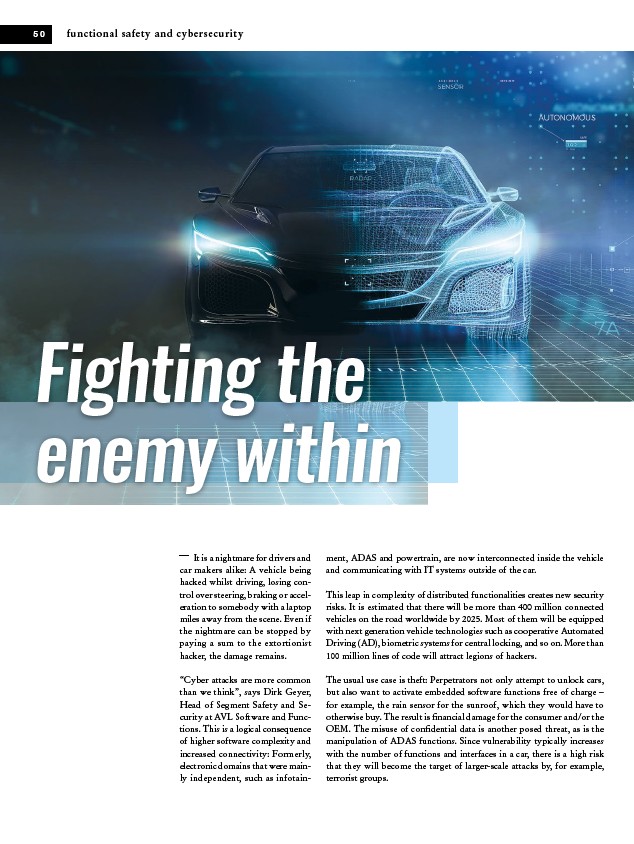
5 0 functional safety and cybersecurity
Fighting the
enemy within
It is a nightmare for drivers and
car makers alike: A vehicle being
hacked whilst driving, losing control
over steering, braking or acceleration
to somebody with a laptop
miles away from the scene. Even if
the nightmare can be stopped by
paying a sum to the extortionist
hacker, the damage remains.
“Cyber attacks are more common
than we think”, says Dirk Geyer,
Head of Segment Safety and Security
at AVL Software and Functions.
This is a logical consequence
of higher software complexity and
increased connectivity: Formerly,
electronic domains that were mainly
independent, such as infotainment,
ADAS and powertrain, are now interconnected inside the vehicle
and communicating with IT systems outside of the car.
This leap in complexity of distributed functionalities creates new security
risks. It is estimated that there will be more than 400 million connected
vehicles on the road worldwide by 2025. Most of them will be equipped
with next generation vehicle technologies such as cooperative Automated
Driving (AD), biometric systems for central locking, and so on. More than
100 million lines of code will attract legions of hackers.
The usual use case is theft: Perpetrators not only attempt to unlock cars,
but also want to activate embedded software functions free of charge –
for example, the rain sensor for the sunroof, which they would have to
otherwise buy. The result is financial damage for the consumer and/or the
OEM. The misuse of confidential data is another posed threat, as is the
manipulation of ADAS functions. Since vulnerability typically increases
with the number of functions and interfaces in a car, there is a high risk
that they will become the target of larger-scale attacks by, for example,
terrorist groups.